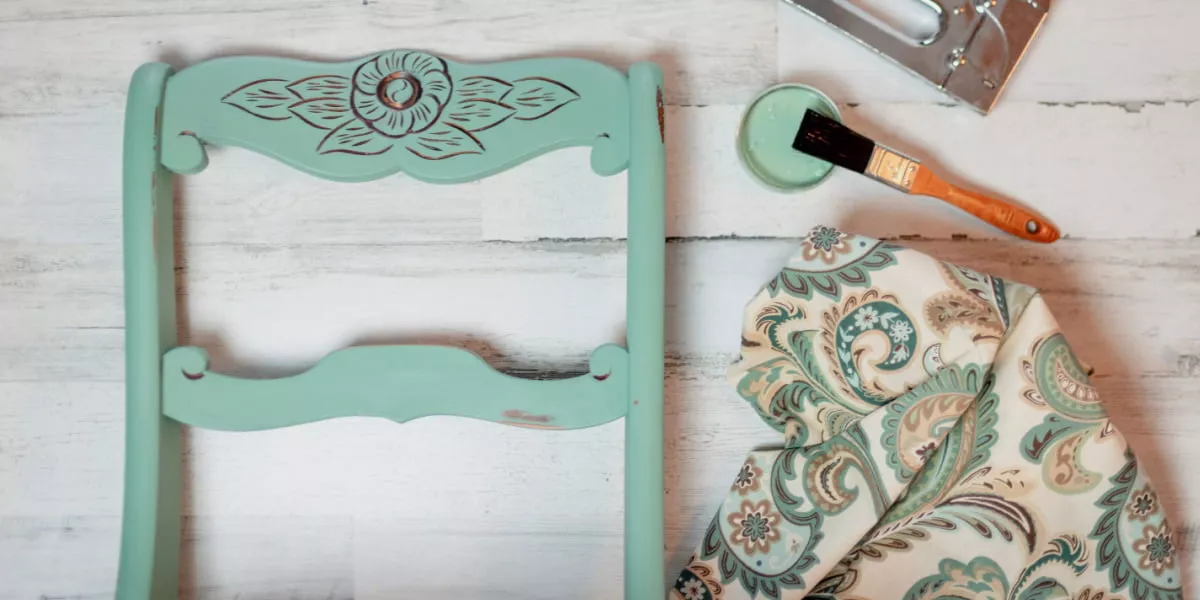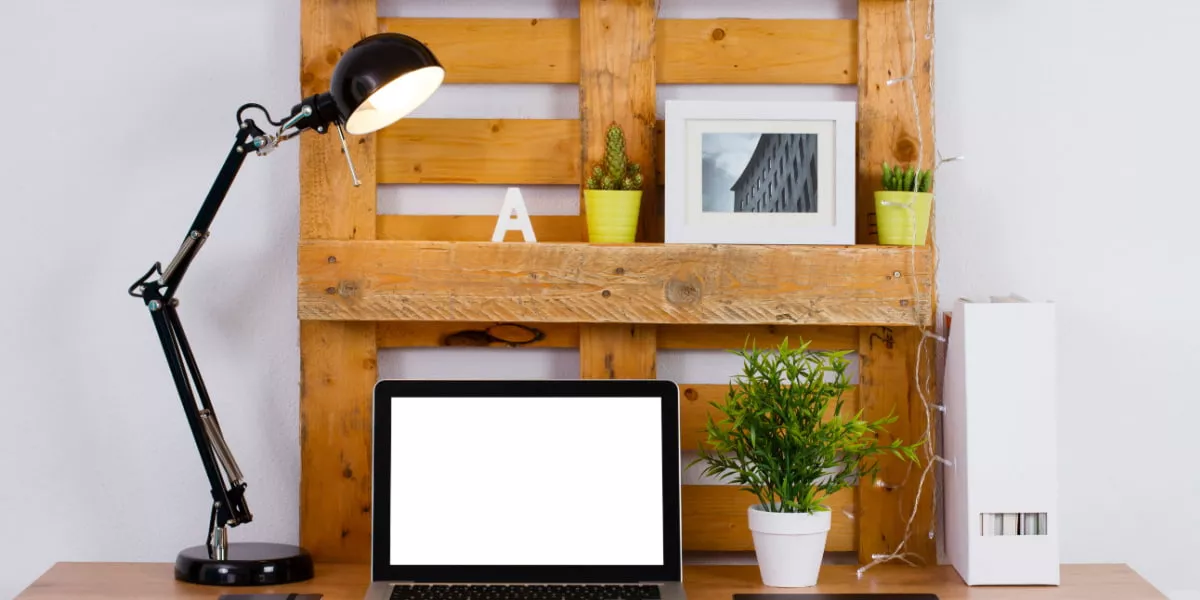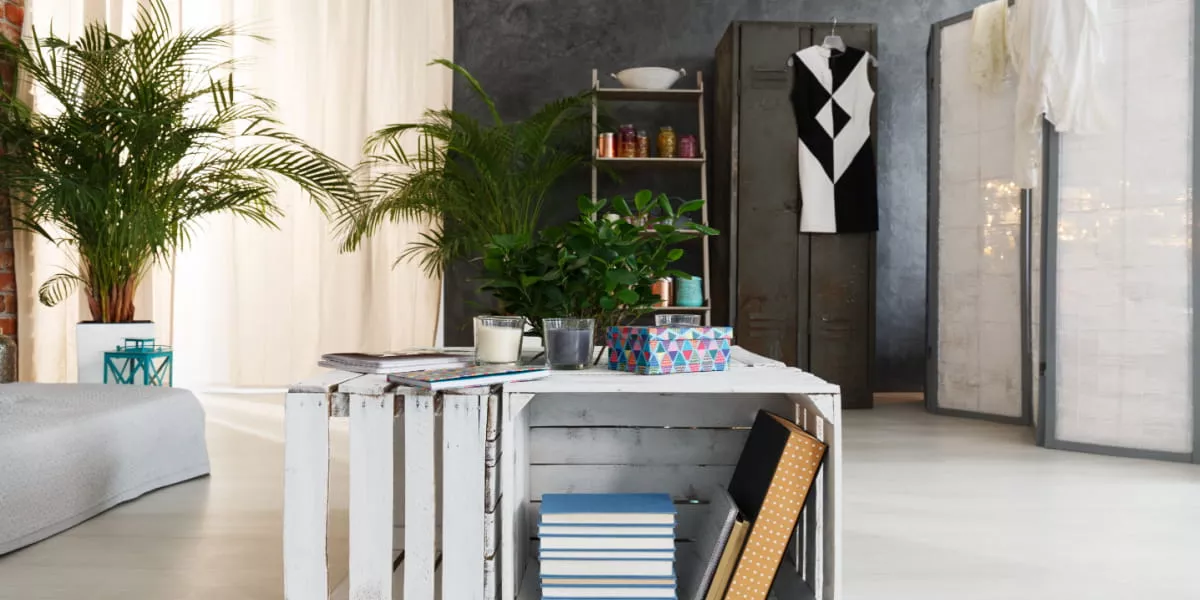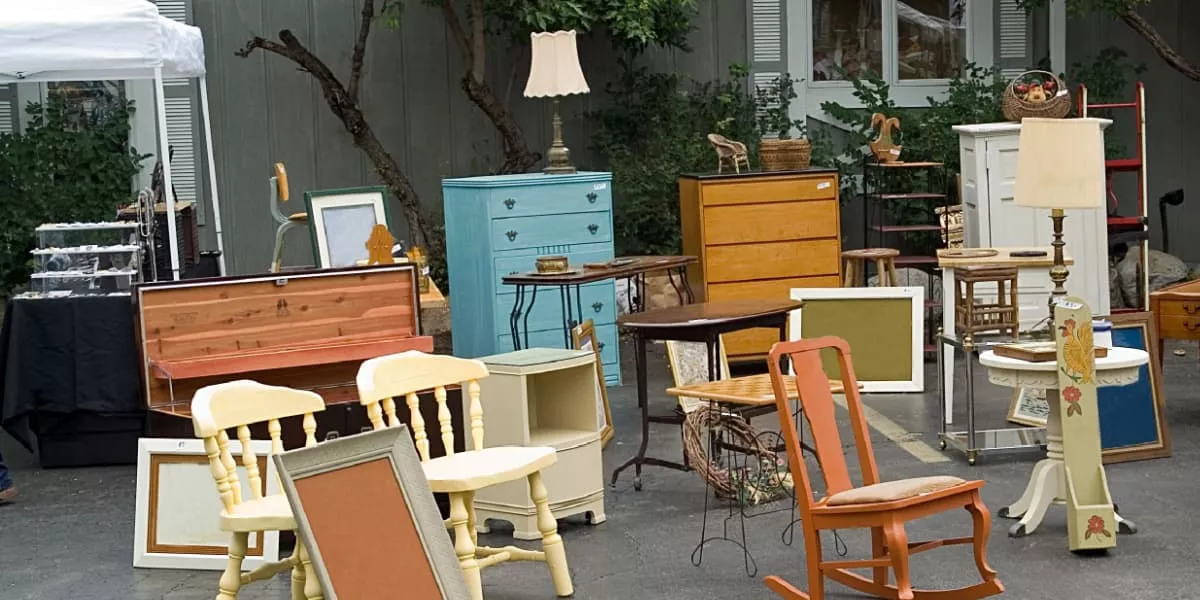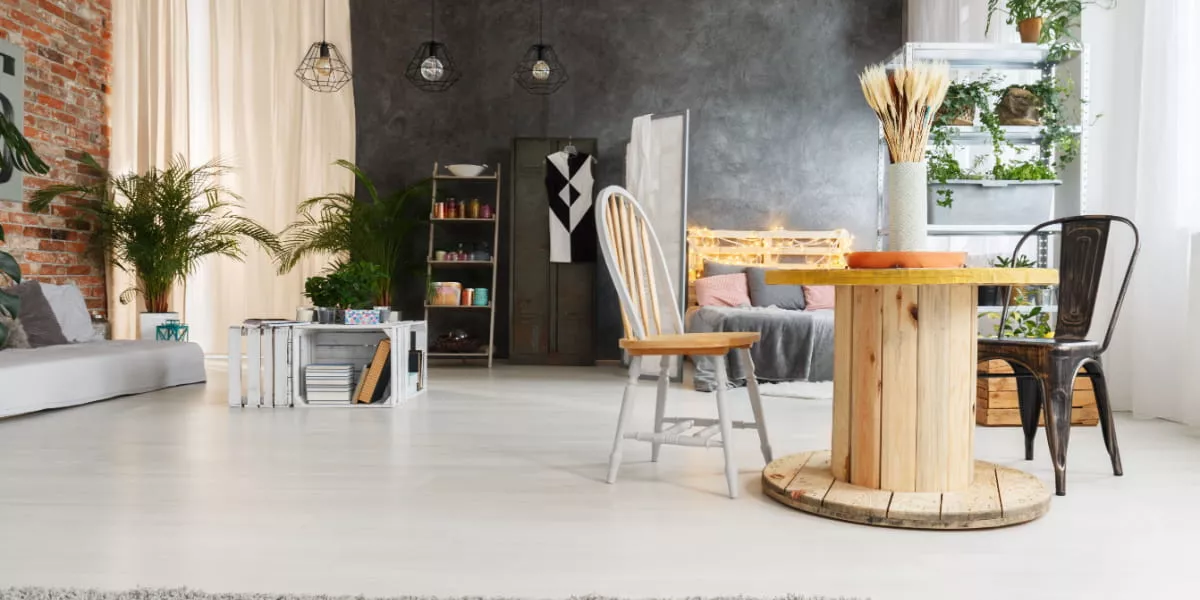Refresh your home office with upcycled furniture

As Australians continue to work from home and look for affordable ways to customise their home offices, many people are turning to upcycling.
Upcycling can be a big help, especially as the cost of living increases. While recycling - the collection, processing and remanufacturing of materials into new items - is common practice across Australia and many other parts of the world, upcycling is less well known.
In this guide, discover what upcycled furniture is, including the advantages, and explore some helpful ideas and tips on repurposing furniture.
What is upcycled furniture?
So, what's it all about? In simple terms, upcycling refers to the practice of taking an item that would otherwise be heading to landfill, and finding a way to repurpose it into something new of higher value, thereby extending the item’s lifespan. Another way to think about it is when you reuse, restore, and improve old everyday items that otherwise have little value.
Arguably, upcycling is even better than recycling in many instances as there are none of the energy-intensive factory processes that are deployed to break down the old materials. Rather, upcycling reuses old materials more directly in their current state and therefore removes the need for such industrial processes, which can detract from helping the environment.
Secondly, upcycling leads to consumers buying fewer new things. This means less resource usage, which is better for the environment since manufacturing causes carbon emissions.
When it comes to repurposing furniture, there are plenty of applications ranging from small to big. It could be anything from turning some vintage tin cans into planters, transforming an old bench into a new chair, or converting an antique door into a stylish office table.
Upcycling furniture has become very popular lately. That's likely because upcycled furniture, including office furnishings, is a great way of curbing environmental impact while promoting innovation and resourcefulness in relation to new uses for old pieces.
Also referred to as repurposed furniture, you may upcycle items with a fresh look to make it suit a new interior, or give the piece a huge overhaul to create something new. Reasons for upcycling vary. Some people upcycle furniture as a personal hobby, while others leverage their enthusiasm for furniture upcycling into small businesses, selling the items for a profit in-store and online.
Read our guide on how to revitalise your home office with biophilic design
Upcycling and the environment
Given the greater consumer awareness about environmental sustainability, it's little surprise that more Australians are getting interested.
Upcycling appeals to consumers because of the practice's environmental upsides. Above all, the fact that you're preventing items becoming trash and ending up in landfill is a huge win.
Some context is important. Australia generates around 75.8 million tonnes of waste every year, with over half of it sent for recycling, while 27% gets sent to landfill for disposal, as per Australian Bureau of Statistics (ABS) data. This makes the diversion of items a significant factor.
While landfills are a societal necessity they come with big costs to the environment. First and foremost, landfills release methane gas as the organic mass in the dump decomposes. That's a serious problem because methane is much better at absorbing the sun's heat than carbon dioxide, making it a super potent greenhouse gas.
Along with methane, landfills also produce other nasty chemicals like carbon dioxide, nitrogen, hydrogen that also contribute to climate change and create polluting smog.
Repurposing furniture during tough economic times
Upcycling is a smart idea to consider as Australians grapple with a cost-of-living crisis. With interest rates on the rise and inflation at stubbornly high levels, countless individuals and businesses are looking for ways to save money and keep their finances on track.
On this point, it's easy to see why more people are turning to upcycling. As official figures from the ABS show, living costs are the highest they have ever been, and remain above the current rate of inflation. All living cost indices rose by between 6.3% and 9.6% for all households in the past year.
Against this backdrop, upcycling furniture for the office - instead of going out and spending your hard-earned money on new items - can be a great way to keep costs down.
How to repurpose your home office furniture
You may not believe it, but you'll likely already have furniture around your home that can be upcycled. A good place to start can be to scope out your home for timber items like coffee tables, side tables, drawers, tallboys, and desks. Timber's a good option as you can often achieve a great finish quite easily, and it can be a good fit with a wide range of home office decors.
When it comes to other materials, like metals and plastics, these can also be upcycled but things can get trickier. You may need to opt for a spray or enamel paint to get the job done.
Depending on the materials you're working with you may also need to think about sanding, repainting or reupholstering furniture as part of the process. There's also the possibility of modifying large pieces so that they neatly fit your office space.
What can you upcycle in your home office?
As mentioned, there's a whole host of furniture types that fit the bill for upcycling with desks, office chairs and monitors all likely candidates.
Additionally, if you're just starting out and refurbishing those types of items sounds a bit involved a good place to start might be with office lighting.
Lighting is a key aspect to any home office and there are lots of different creative ideas for using upcycled materials to create unique office lampshades. These could be stripping away the fabric from old lampshades to create a pared-back industrial look, or using fabrics at home for a DIY light fixture that’s in keeping with your home office design style.
Creating storage units is another great entry-level upcycling project for the home office. Here, old pallets - cheap to acquire and often made from good quality wood - can be retooled into storage units. While it may sound challenging, after a bit of sanding and varnishing these kinds of items can look very rustic and stylish, especially as shelving units.
Keep in mind, when we're talking about upcycling furniture for the office there's also room to consider refurbishing office equipment. Often overlooked, electrical products such as printers can also be refurbished.
Shop Brother's range of refurbished printers here.
5 upcycled furniture ideas
There's a myriad of ways to upcycle furniture for the home office, depending on the specific needs and spatial limitations of home-based or hybrid workers. Here are five ideas that'll get you inspired:
- Filing cabinets: In possession of a metal filing cabinet somewhere around the house? Why not give it a makeover and transform it into a storage unit that you're proud to have in the home office. With some creative thinking (and some MDF and timber moulding) these common household units can be transformed into stylish storage solutions for the home office
- Curtains: If you want to install blinds for a more professional look, a popular option is to repurpose curtain material for cushions for the office sofa (if you have space for one). There's also the option to turn the curtain into tea towels to have on hand for wiping down any spills that occur while eating and drinking in the office through the day
- Old art: Usually people have some old art lying around the house or in the garage they no longer want, but don't know what to do with it. An upcycling idea in this circumstance is to turn the frame into a blackboard for making notes or brainstorming. In terms of supplies to do the job, you'll probably need MDF and some chalkboard paint
- Dressing table: Sometimes it pays to think outside the box when repurposing old furniture. That's the case here with turning an old dressing table into a feature office desk. In many cases, a standard desk in the home office can be drab and lack a personal touch. If you're in this boat, you could give your space a unique feel by turning a dressing table into a new desk
- Bookshelves: Bookshelves are undoubtedly becoming rarer as office features as everything becomes digital, but they can still provide a nice polished look to a home office if that's something that suits the space's style. After all, most offices still need a few large items to sit against walls, which can be where bookshelves fit the bill. If your bookshelf is looking extra drab, strip the surface, varnish, and then add colour if it fits with the office look
Where should I look for upcycled furniture?
It used to be that looking for furniture to repurpose meant hitting the pavement, but that was before the internet changed the game. Now there are plenty of online marketplaces, like Etsy, Facebook Marketplace, Gumtree and eBay - where you can unearth second-hand furniture at lower prices than unused, new furniture.
Of course, you can still take the old-fashioned method and get out in real life to track down what you're looking for. If you're taking that route, here are a few ideas:
Antique stores
These can be a great source of old pieces but the drawback is often price. The fact of the matter is that resellers at the top end of the market often set their prices high.
On the flip side, they often have great stuff compared to vintage stores and thrift stores which can be pretty hit-and-miss. Office equipment auctions also fall into this category.
Local markets
These are another solid option. In addition to stand-alone items that you can pick up for a bargain, you might be able to find older pieces that can be swapped out for a piece you already own like a chair or table legs, hardware or lighting.
What to look out for with upcycled furniture
There are lots of hacks to make sure you pick furniture with the most upcycling potential. Some things to keep in mind include ensuring that the office equipment is ergonomic and comfortable so you actually want to use it after it's been refurbished.
There's another super obvious point that's nonetheless worth noting - make sure whatever pre-loved furniture you upcycle physically fits in your space and is in good enough condition that it can be adequately restored to a level that meets the standard of a home office.
Giving home office items a second life
For home office workers who have a preference for sustainable alternatives, Brother offers a range of refurbished products that have undergone stringent testing and refurbishment processes to ensure they meet the same high-quality standards as their brand new counterparts.
These products include printers and all-in-one machines, all of which feature the latest in technological advancements and capabilities. With Brother's commitment to environmental responsibility, you can rest assured that you are not only making a sound financial investment, but also contributing to the circular economy.

Resource Library
Be the first to receive exclusive offers and the latest news on our products and services directly in your inbox


